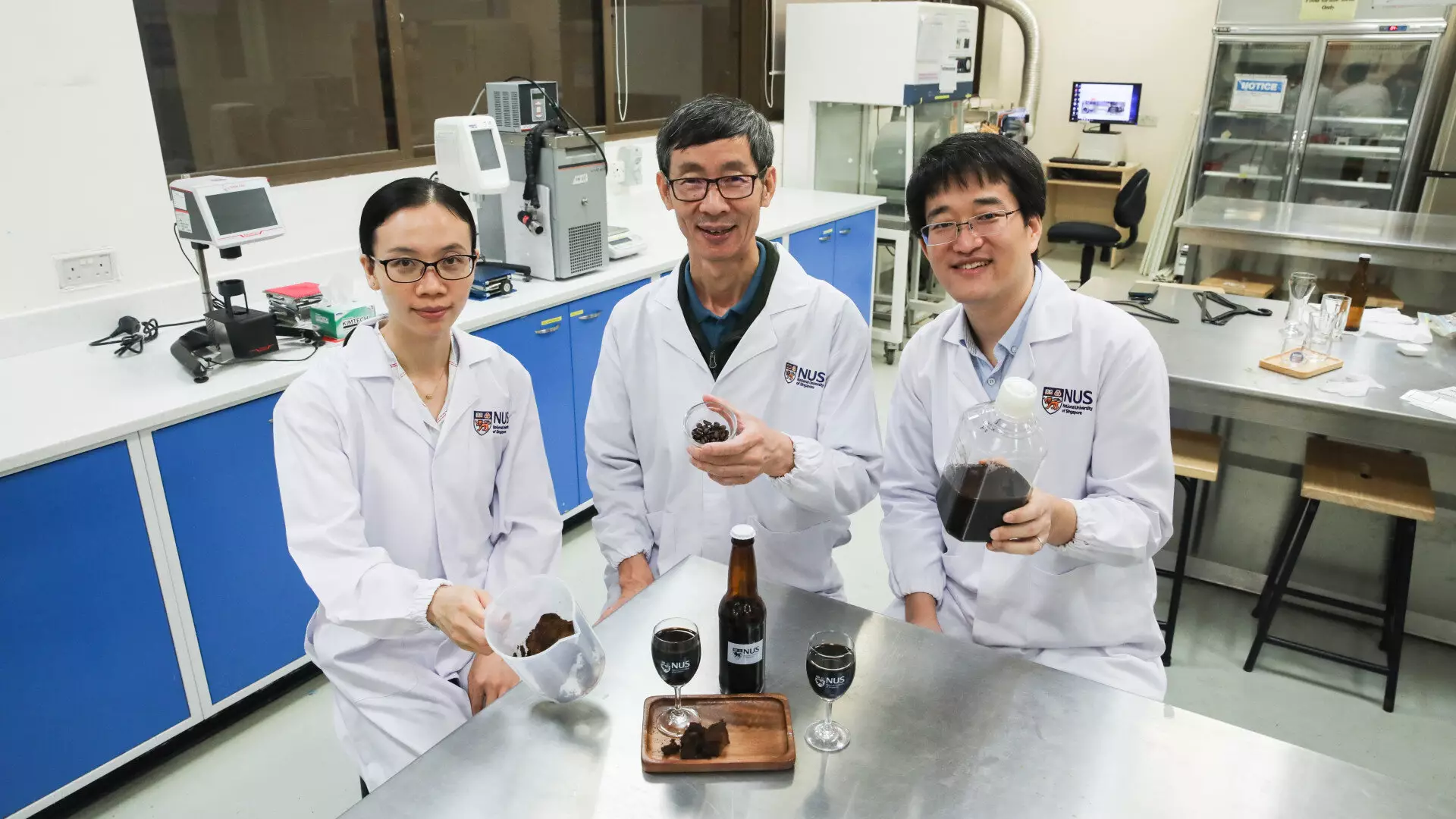Spent coffee grounds (SCG) are a significant contributor to the global waste generated by coffee consumption. With approximately 6 million metric tons of waste produced annually, finding sustainable solutions for managing SCG is crucial. Scientists and researchers are continuously exploring innovative approaches to convert SCG into value-added products. One such approach involves transforming SCG into alcoholic beverages through fermentation. A team of researchers led by Associate Professor Liu Shao Quan from the NUS Department of Food Science and Technology has embarked on this journey, focusing on the flavor, aroma, and potential health benefits of SCG-derived alcoholic beverages.
To create an alcoholic beverage from SCG, the researchers first prepared SCG hydrolysates, which were then fermented using a combination of microorganisms, including yeasts. Yeast plays a vital role in influencing the chemical composition and quality of alcoholic beverages, affecting taste and aroma. The team’s initial study, published in the journal LWT in 2021, explored the use of non-Saccharomyces yeasts, deviating from the traditional use of Saccharomyces yeasts. This approach opened up possibilities for novel flavors and other characteristics in SCG-derived alcoholic beverages.
Continuing their research, the NUS team experimented with the addition of lactic acid bacteria alongside yeasts during fermentation. By using a mixture of yeast (Lachancea thermotolerans) and a lactic acid bacterium (Lactiplantibacillus plantarum), they aimed to enhance the smell and taste of the SCG-derived alcoholic beverage. Compared to fermenting SCG hydrolysates with only yeast, this method led to higher concentrations of compounds associated with a pleasant aroma and taste. These findings were published in the journal Foods on March 9, 2023.
In their latest study, published in the journal Food Research International, the research team delved deeper into the fermentation strategy using the yeast and lactic acid bacteria mixture. They conducted a detailed metabolomic analysis utilizing liquid chromatography quadrupole time of flight mass spectrometry (LCQTOF-MS). This advanced analytical technique allowed them to identify and confirm the presence of chemical compounds in the fermented SCG.
Remarkably, this study marked the first time such an approach was employed to determine the complete compound profile of SCG hydrolysates fermented by a combination of yeast and bacteria. The metabolomic analysis revealed the presence of bioactive compounds associated with various health benefits, such as anticancer, anti-inflammatory, and antimicrobial activities. This breakthrough finding demonstrates the potential value of SCG-derived alcoholic beverages beyond their taste and aroma.
In their pursuit of creating innovative SCG-derived alcoholic beverages, the research team developed several prototypes with distinct flavor profiles. While some prototypes retained a coffee flavor, others achieved a pleasant taste without a strong coffee essence. These variations open up possibilities for catering to different consumer preferences.
Another crucial aspect of their research was the identification of compounds known to confer health benefits. Through rigorous testing, the team confirmed the presence of alkaloids and phenolic acids in all the prototypes. With their inherent health-promoting properties, these compounds further enhance the potential value of SCG-derived alcoholic beverages.
Associate Professor Liu Shao Quan and his team’s pioneering research into SCG-derived alcoholic beverages showcases the untapped potential of this abundant coffee waste. By exploring unconventional fermentation processes and conducting comprehensive analyses, they have demonstrated the viability of creating alcoholic beverages with complex flavors and inherent health benefits from SCG. This research not only contributes to sustainable waste management in the coffee industry but also opens up possibilities for the development of novel value-added products. The future of SCG lies beyond its role as waste, offering new opportunities for innovation and sustainability.


Leave a Reply